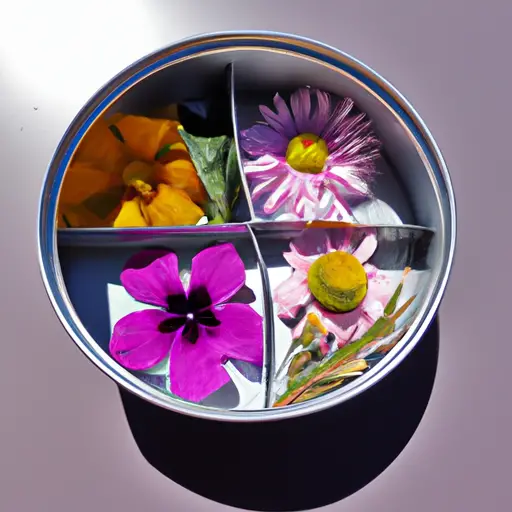Exploring the World of Edible Flowers through Container Gardening
There is something truly magical about adding edible flowers to our diets. Not only do they enhance the visual appeal of our dishes, but they also introduce new flavors and aromas that can elevate any meal. While many might assume that growing flowers for consumption requires a large garden or outdoor space, container gardening offers a convenient and accessible way to explore the world of edible flowers.
Container gardening has gained popularity in recent years due to its flexibility and suitability for urban living. With just a few pots or containers, even those with limited space can enjoy the pleasure of growing their own food, including unique and flavorful edible flowers.
One of the advantages of container gardening is that it allows for better control over soil quality and drainage. This is especially important when cultivating delicate plants like edible flowers, as they often require specific conditions to thrive. By selecting the appropriate potting mix and ensuring proper drainage in containers, we can create an optimal environment for these delicate plants.
When it comes to choosing which edible flowers to grow, there is an impressive range of options available. Some popular choices include nasturtiums, pansies, marigolds, violets, and calendula – each with its own distinct taste and culinary use. Nasturtiums offer a peppery flavor that adds zest to salads and sandwiches. Pansies contribute a slightly sweet taste perfect for garnishing desserts or infusing into oils for dressings. Marigolds have a citrusy flavor often used in tea or as a colorful addition to rice dishes. Violets offer subtle floral notes ideal for decorating cakes or steeping into tea for a fragrant brew. Lastly, calendula’s earthy taste enhances soups and stews while providing vibrant color.
To get started with container gardening for edible flowers, begin by selecting pots or containers that are at least 6-8 inches deep with adequate drainage holes. Fill them with a high-quality potting mix, specifically formulated for container gardening, to provide the necessary nutrients and moisture retention. Place the containers in an area that gets plenty of sunlight, as most edible flowers thrive with at least 6 hours of direct sunlight per day.
When it comes to watering edible flowers, it is important to strike a balance. Over-watering can lead to root rot and other diseases, while under-watering can stunt growth or cause wilting. Regularly check the moisture level of the soil by sticking your finger about an inch deep – if it feels dry at that depth, it’s time to water. Water thoroughly until it runs out from the drainage holes but make sure not to let the plants sit in standing water.
Container gardening also allows for greater mobility, so you can move your plants around as needed. This flexibility is especially beneficial during extreme temperatures or if you have limited sunlight availability. By keeping an eye on weather patterns and adjusting the placement accordingly, you can ensure that your edible flowers receive optimal conditions for growth.
Once your edible flowers have bloomed and are ready for harvest, remember to pick only the petals or blossoms carefully, discarding any stems or green parts. Rinse them gently before incorporating them into your culinary creations to remove any lingering dirt or insects.
Experimenting with edible flowers can be a delightful journey of flavors and aromas. By venturing into container gardening specifically tailored for these delicate plants, anyone can enjoy these colorful additions to their meals without requiring a vast garden space. So why not bring a touch of beauty and uniqueness to your plate by embarking on this exploration into the world of edible flowers through container gardening?













